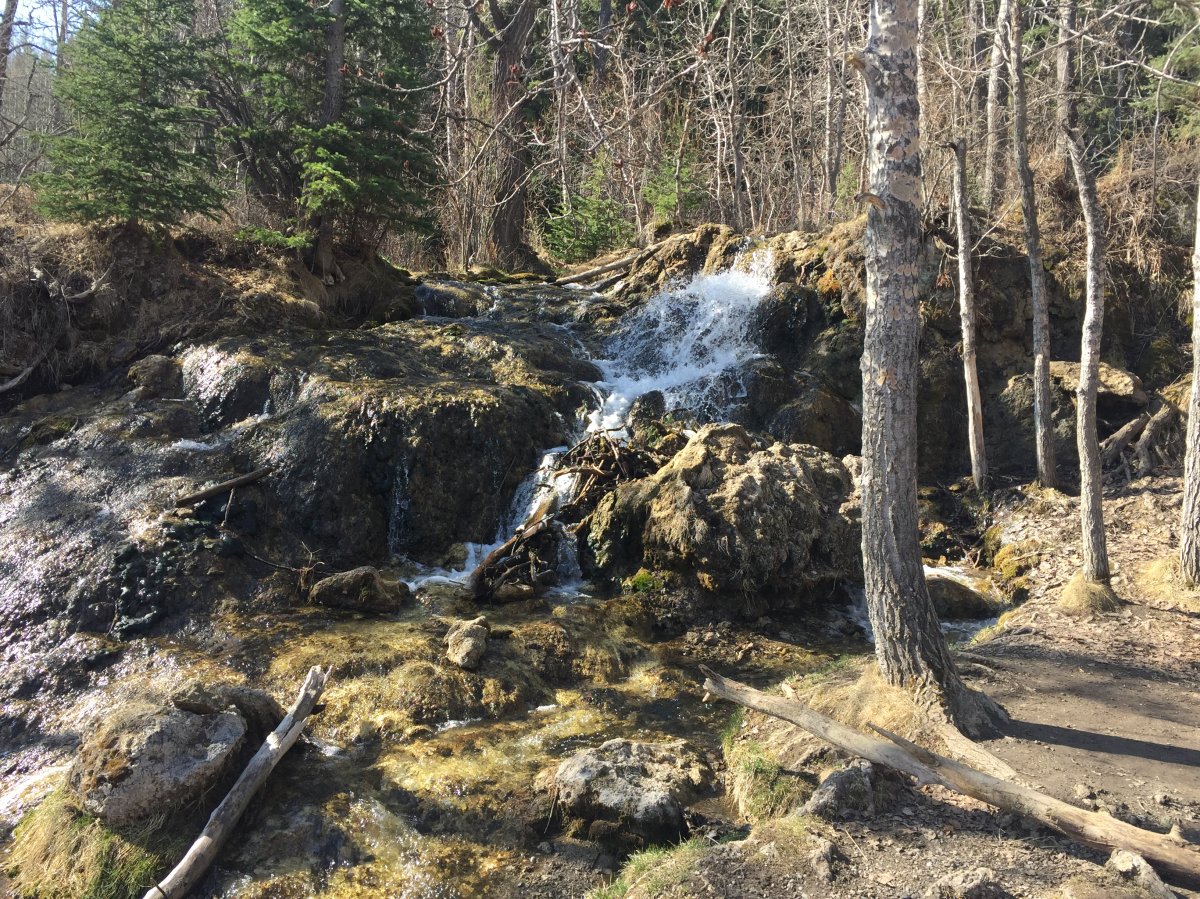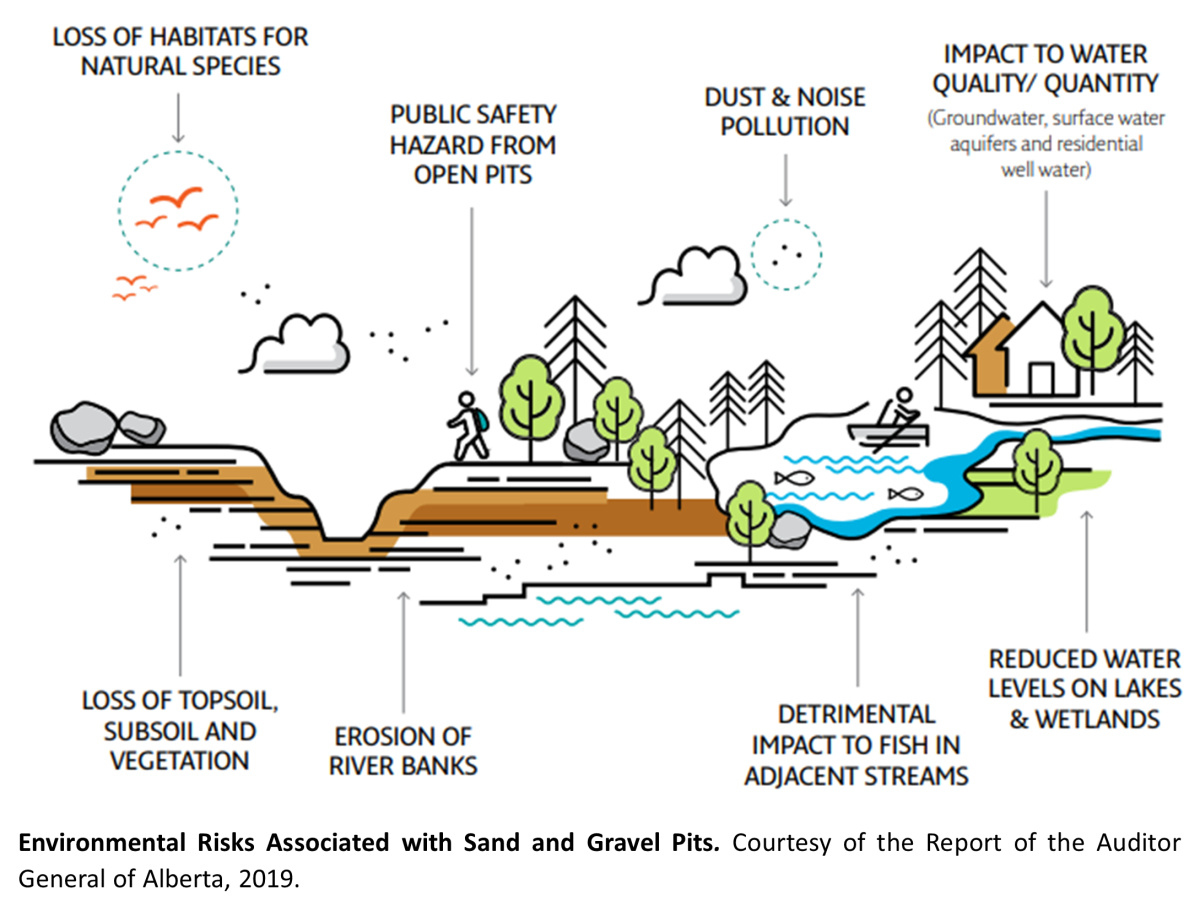On the outskirts of Calgary, Big Hill Springs Provincial Park in Cochrane hosts a treasure of outdoor exploration.

Some 250,000 visitors every year are drawn by the park’s forested hikes, waterfalls and even a fish hatchery.
What’s more, it supplies clean freshwater to Big Hill Creek and the Bow River.
“The Big Hill Springs is a cold-water mineral spring that runs year-round that provides a steady temperature and freshwater which is important aquatic habitat,” said Kennedy Halvorson, a conservation specialist with the Alberta Wilderness Association.
But the area isn’t without contention.
Alberta Environment and Protected Areas (AEPA) approved the development of a gravel mine just 800 metres from Big Hill Spring Provincial Park in July.
The approvals, not only by AEPA but also Rocky View County, have gone ahead despite stiff opposition from park users and area residents. They’ve gathered more than 11,000 signatures in an online petition asking for governments to rethink the development.
The Big Hill Creek Preservation Society and the Alberta Wilderness Association have filed appeals, asking for the province to rescind its approval.
“Albertans shouldn’t have to tolerate extraction and environmental degradation so close to provincial parks and important water systems and risk irreparable damage to ecological marvels like Big Hill Springs,” said Halvorson.
Mountain Ash Limited Partnership did not respond to Global News’ request for comment. On its website it says its hydrological impact assessment suggests the proposed project would not post any significant or adverse impacts to existing groundwater or to Big Hill Springs.
It says it’s limiting three to four decades of mining operations to about 40 acres of open excavation at once, to a minimum of one metre above the depth of the groundwater table.
Hydrogeologist and geochemist Dr. Jon Fennell suggests the company’s assurances are inconsistent with current literature.
In a 2021 letter to Rocky View County, where he lives, Fennel suggested, “Contaminants released into the groundwater (natural or development-related, like fuels or chemicals) will flow through a significantly reduced gravel layer and into the fractured bedrock where they will move the springs and discharge with minimal attenuation.”
In the most recent Auditor General report on gravel and sand pits, it suggests “The Department of Environment and Parks (AEP) does not do enough to protect Albertans from the risks created by sand and gravel pits.”
The AEPA issued the following statement to Global News:
As with all regulatory application reviews, Alberta Environment and Protected Areas conducted a detailed review that focused on ensuring activities are conducted in an environmentally sustainable manner and that Alberta’s environmental laws and policies are followed.
As part of assessing this project, Alberta Environment and Protected Areas’ hydrologists and other technical experts reviewed the application. As part of the approval, Mountain Ash will be required to develop and implement a comprehensive surface and groundwater water monitoring and management plan. Those plans include early warning triggers should changes occur in surface/groundwater that may affect the environment.
The regulatory review process closely considered all of the statement of concerns that were received, in accordance with EPA legislation. As previously noted, the project can only move ahead with monitoring programs in place, and gravel can only be extracted as long as there are no significant changes to surface or groundwater conditions.
Rocky View County said this project was approved by the previous council in April of 2018 and that it is now at a provincial level.
It is currently in the process of developing an aggregate resource plan to guide future developments. It will host its first committee meeting, which is open to the public, on Tuesday.
-With files from Craig Momney, Global News.






Comments